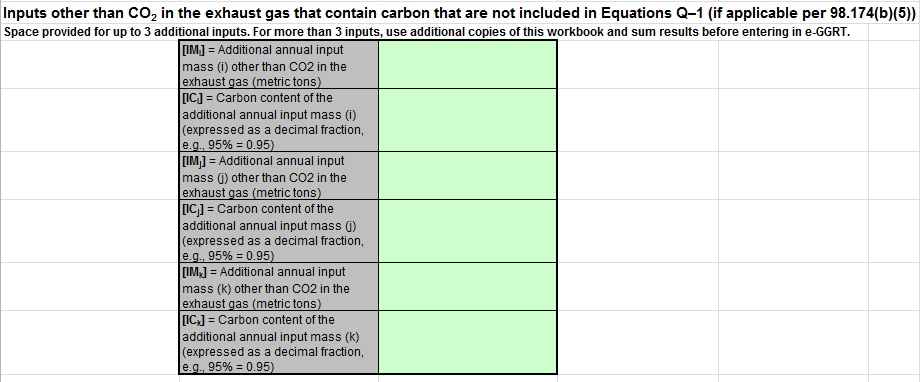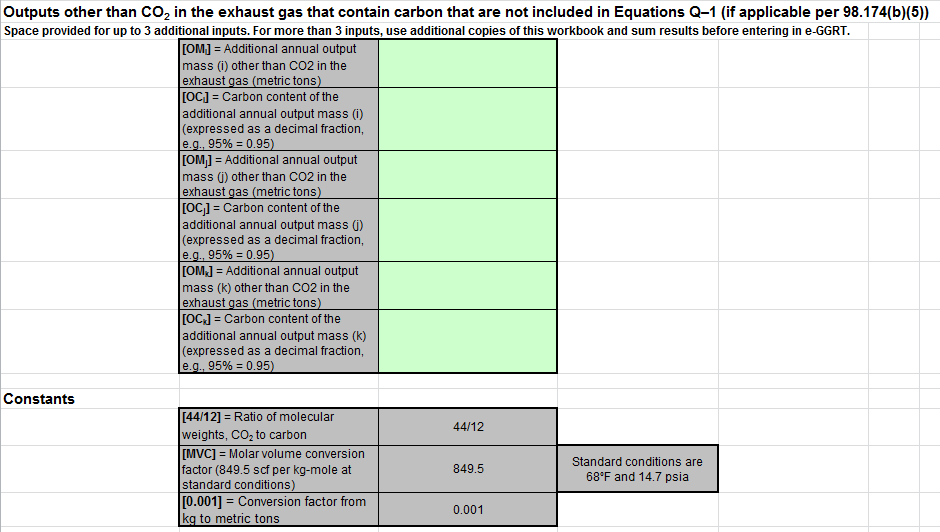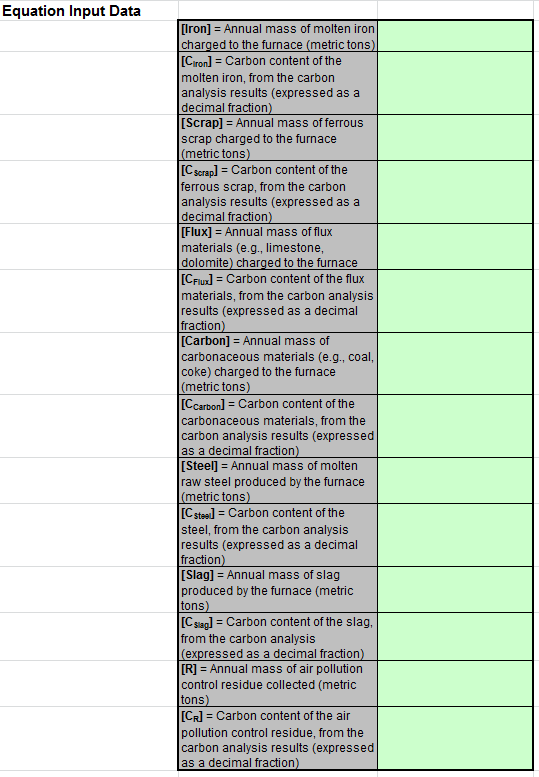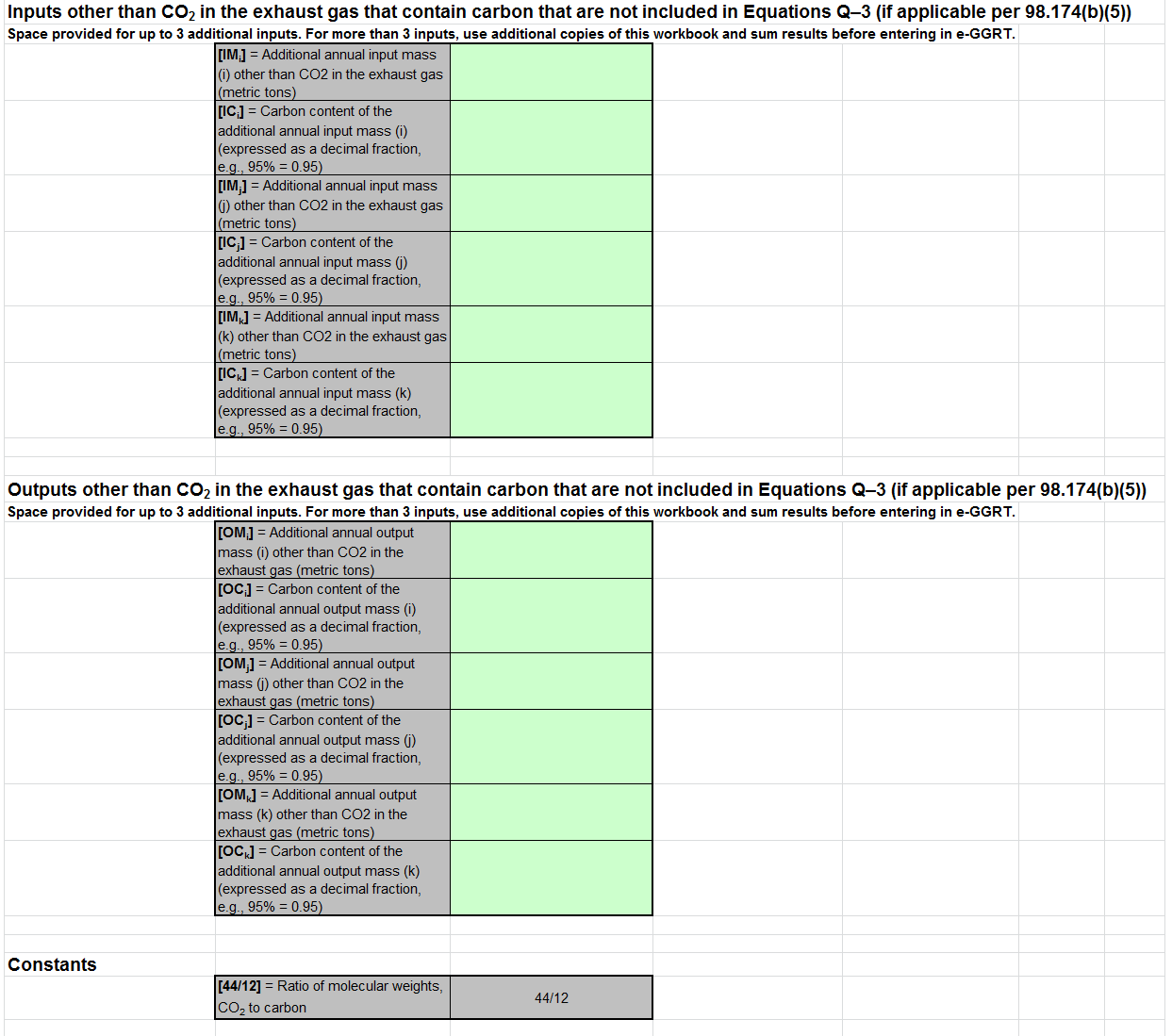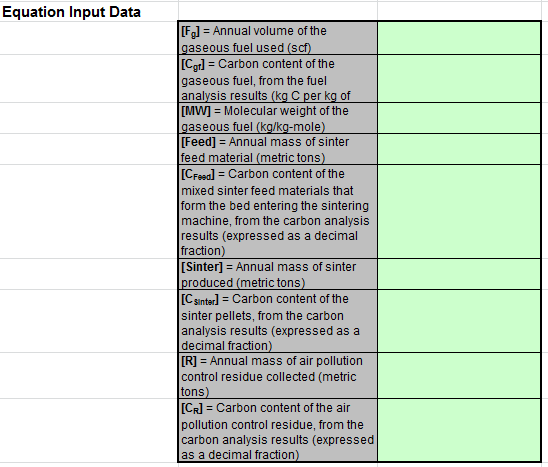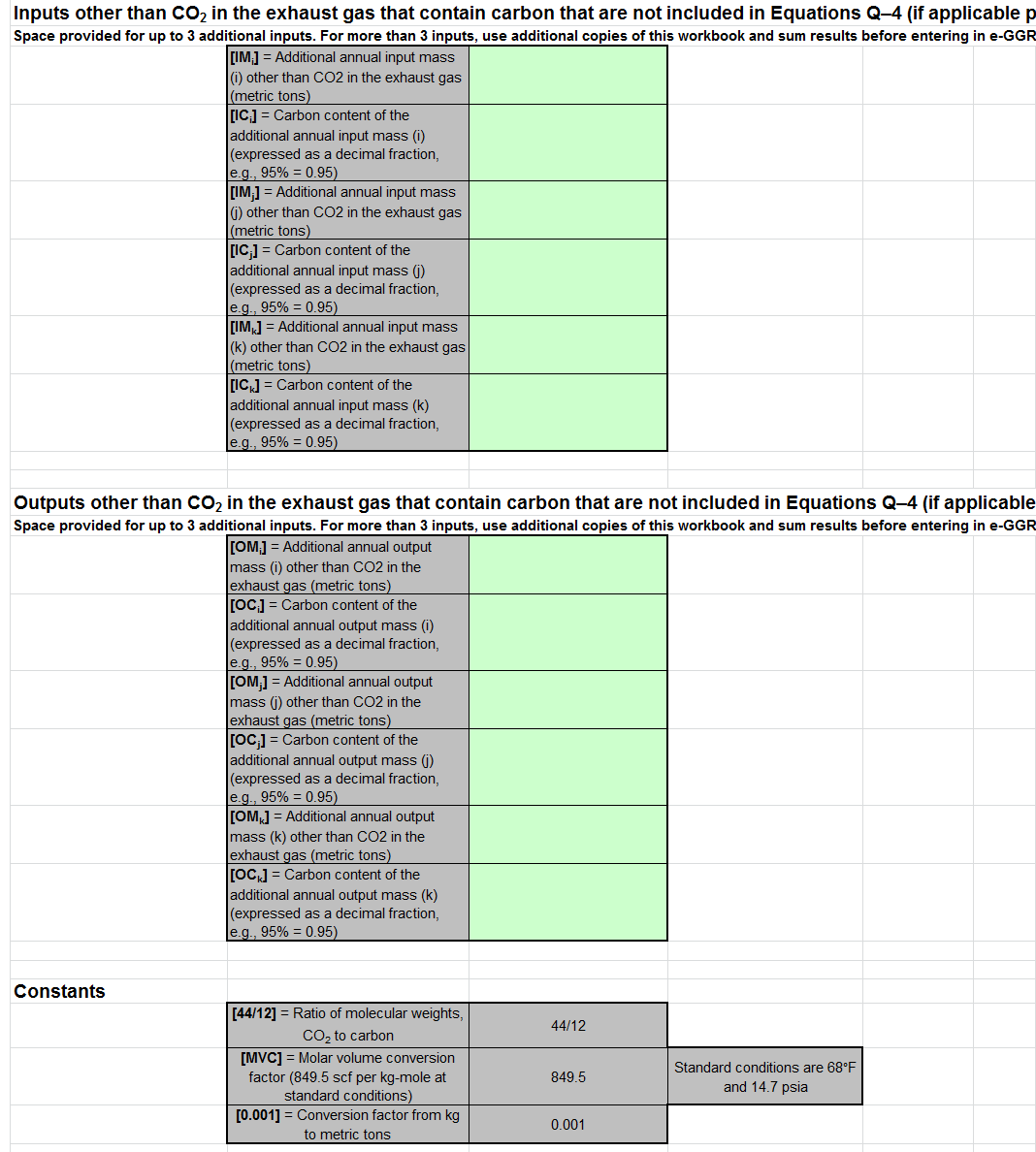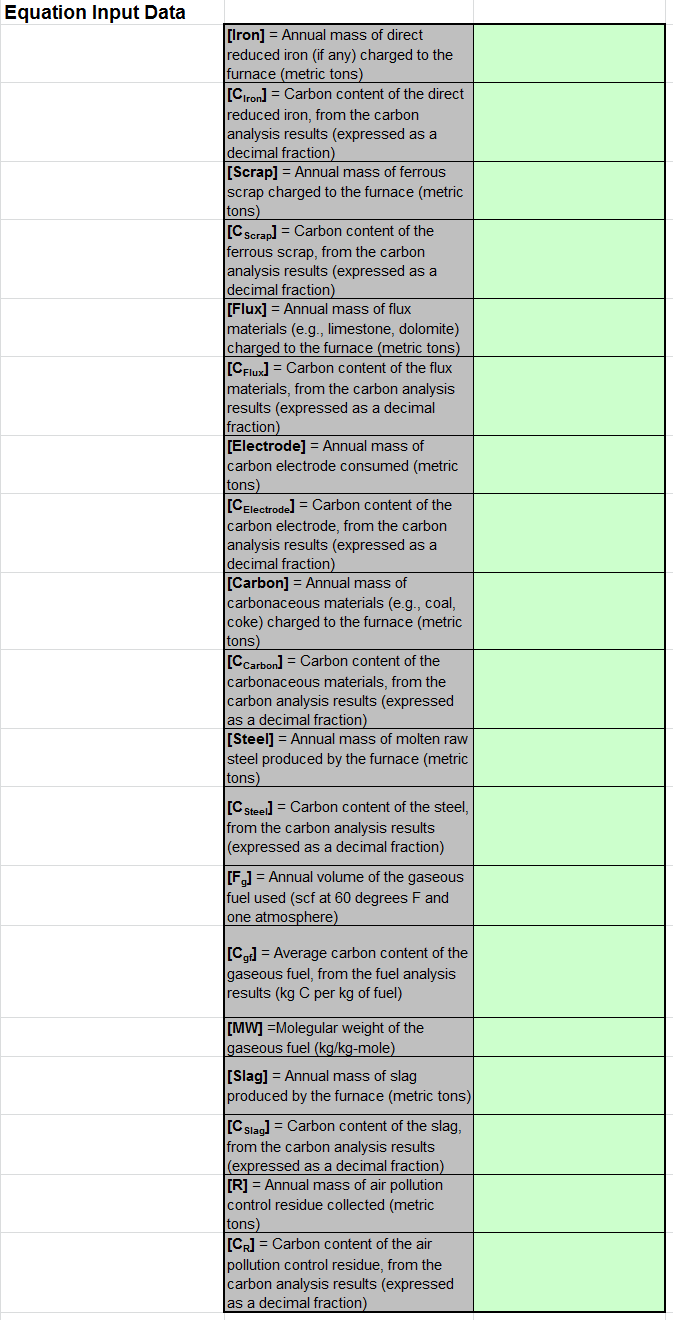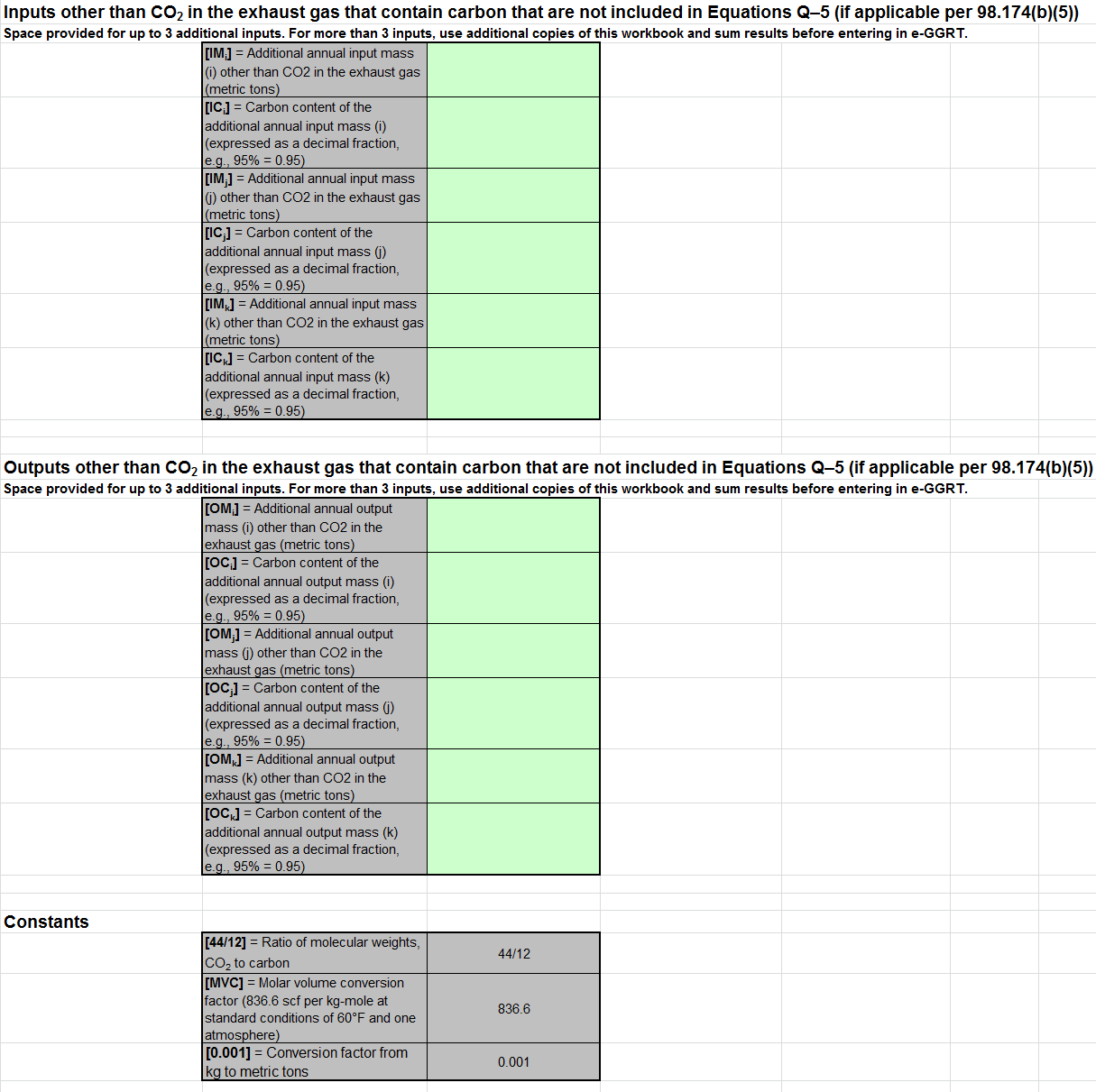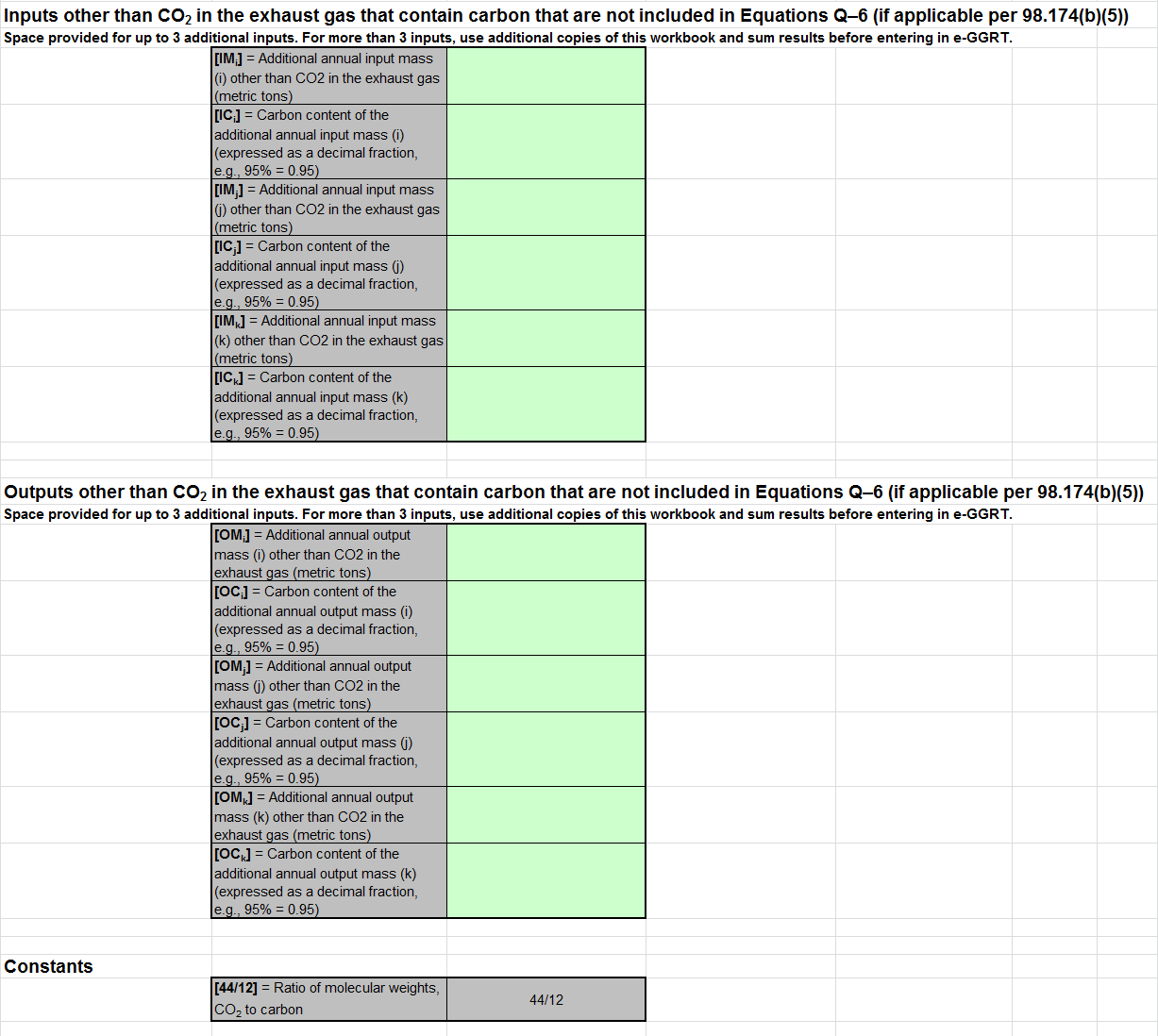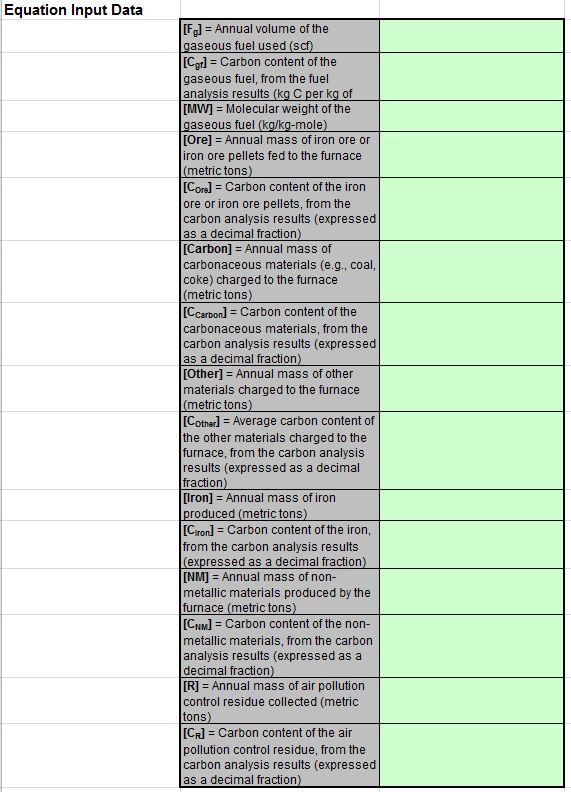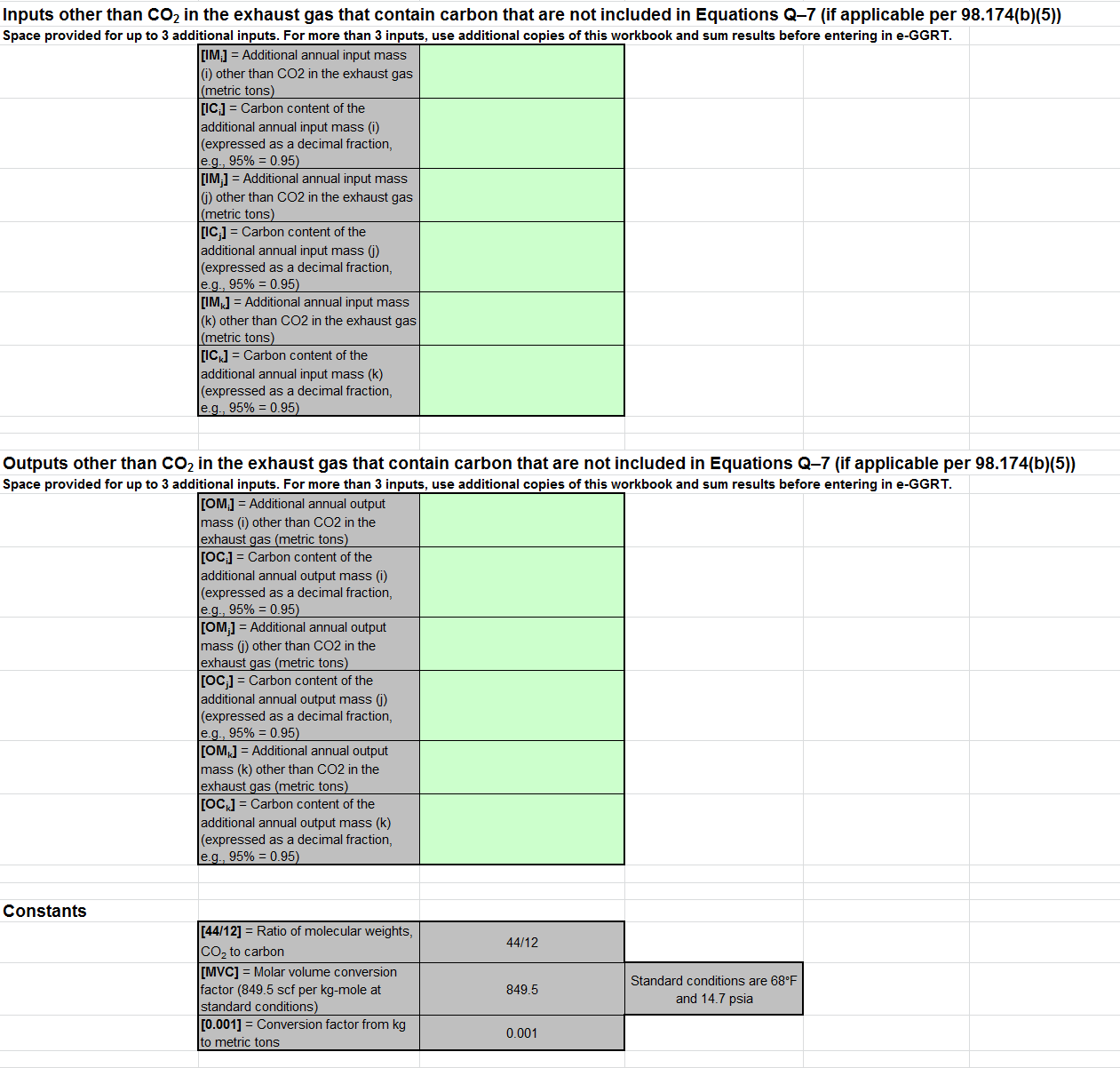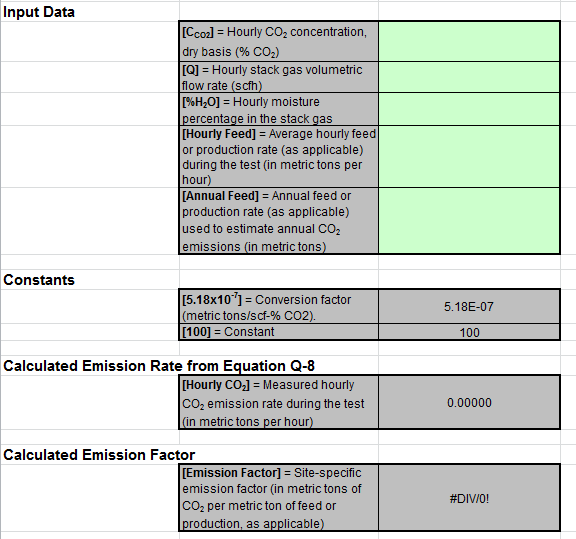| Anchor | ||||
|---|---|---|---|---|
|
| Excerpt Include | ||||||
|---|---|---|---|---|---|---|
|
...
Overview
This help page provides guidance for working with the supplemental Subpart Q calculation spreadsheets. The guidance provides step-by-step instructions for the following tasks:
- #Selecting Selecting the Appropriate Calculation Spreadsheet
- #Downloading Downloading a Calculation Spreadsheet
- General Information on Using a Calculation Spreadsheet
- Using the Equation Q-1 Calculation Spreadsheet
- Using the Equation Q-2 Calculation Spreadsheet
- Using the Equation Q-3 Calculation Spreadsheet
- Using the Equation Q-4 Calculation Spreadsheet
- Using the Equation Q-5 Calculation Spreadsheet
- Using the Equation Q-6 Calculation Spreadsheet
- Using the Equation Q-7 Calculation Spreadsheet
- Using the Equation Q-8 EF Approach Calculation Spreadsheet
...
Subpart Q requires facilities to report annual carbon dioxide (CO2) process emissions from each taconite indurating furnace, basic oxygen furnace, non-recovery coke oven battery, coke pushing process sinter process, electric arc furnace, decarburization vessel, and direct reduction furnace or from each exhaust stack used for iron and steel production. To calculate emissions, you may use the carbon mass balance method for each process unit (furnace, coke, oven battery, vessel, etc.) or process, or the site-specific emission factor approach for each exhaust stack process unit used for iron and steel production.
...
Carbon mass balance method calculations are based on the annual mass of inputs and outputs to associated with the process and an annual analysis of the respective the annual average weight fraction of carbon in each input and output. Each process unit type and process type has a unique Spreadsheet Tool for calculating emissions using the carbon mass balance method.
...
Site-specific emission factor approach calculations are based on emission factors and feed rates derived from performance testing. Performance tests must measure CO2 emissions from all exhaust stacks for the process and measure either the feed rate of materials into the process, or the production rate from the process during the test.
Equation Q-8 EF Approach Calculation Spreadsheet. Use this spreadsheet to calculate annual CO2 emissions from each exhaust stack used in iron and steel production. This spreadsheet performs the calculation using the methodology described in 98.173(b)(2)(iii) and (iv) including the equations below:
...
The guidance provided in this section applies to each of the calculation spreadsheet for Subpart Q. Additional guidance is provided for each individual spreadsheet in the sections below.
| Include Page | ||||
|---|---|---|---|---|
|
| Include Page | ||||
|---|---|---|---|---|
|
Multiple Units
...
or Processes
...
Users with multiple unit or group configuration types and multiple fuels should use separate Spreadsheet Tools for each configuration type and for each fuelunit. Users should not aggregate data for multiple configuration process types or fuels when using these Spreadsheet Tools.
...
Next, enter the requested information in the green input cells in the Input Equation Data table.
If you have a process input or output other than CO2 in the exhaust gas that contains carbon that is not included in Equations Q--1, enter the carbon and mass rate of each additional process input or output in the provided additional green input cells.
The spreadsheet will calculate the annual CO2 emissions from this taconite indurating furnace. The calculated value will be displayed in the red-bordered cell at the bottom of the spreadsheet. This value should be entered in e-GGRT for this furnace.
| h3.anchor |
|---|
Using the Equation Q-2 Calculation Spreadsheet |
...
Next, enter the requested information in the green input cells in the Input Equation Data table.
If you have a process input or output other than CO2 in the exhaust gas that contains carbon that is not included in Equations Q--2, enter the carbon and mass rate of each additional process input or output in the provided additional green input cells.
The spreadsheet will calculate the annual CO2 emissions from this basic oxygen process furnace. The calculated value will be displayed in the red-bordered cell at the bottom of the spreadsheet. This value should be entered in e-GGRT for this furnace.
| h3.anchor |
|---|
Using the Equation Q-3 Calculation Spreadsheet |
...
Next, enter the requested information in the green input cells in the Input the Equation Data table.
If you have a process input or output other than CO2 in the exhaust gas that contains carbon that is not included in Equations Q--3, enter the carbon and mass rate of each additional process input or output in the provided additional green input cells.
The spreadsheet will calculate the annual CO2 emissions from this non-recovery coke oven battery. The calculated value will be displayed in the red-bordered cell at the bottom of the spreadsheet. This value should be entered in e-GGRT for this oven battery.
| h3.anchor |
|---|
Using the Equation Q-4 Calculation Spreadsheet |
...
Next, enter the requested information in the green input cells in the Input the Equation Data table.
If you have a process input or output other than CO2 in the exhaust gas that contains carbon that is not included in Equations Q--4, enter the carbon and mass rate of each additional process input or output in the provided additional green input cells.
The spreadsheet will calculate the annual CO2 emissions from this sinter process. The calculated value will be displayed in the red-bordered cell at the bottom of the spreadsheet. This value should be entered in e-GGRT for this sinter process.
| h3.anchor |
|---|
Using the Equation Q-5 Calculation Spreadsheet |
Use the Equation Q-5 Calculation Spreadsheet to calculate annual CO2 emissions from an electric arc furnace using the carbon mass balance method. Use a separate spreadsheet for each furnace. The Equation Q-5 Calculation Spreadsheet performs the calculations using Equation Q-5 provided below.
(Equation Q-5) |
|
|---|
Begin by entering the facility name, your name, the unit name or identifier, reporting period, and any additional comments in the green input cells of the general information table located immediately below the equation in the spreadsheet. This is for your records.
...
Next, enter the requested information in the green input cells in the Input the Equation Data table.
If you have a process input or output other than CO2 in the exhaust gas that contains carbon that is not included in Equations Q--5, enter the carbon and mass rate of each additional process input or output in the provided additional green input cells.
The spreadsheet will calculate the annual CO2 emissions from this electric arc furnace. The calculated value will be displayed in the red-bordered cell at the bottom of the spreadsheet. This value should be entered in e-GGRT for this furnace.
| h3.anchor |
|---|
Using the Equation Q-6 Calculation Spreadsheet |
...
Next, enter the requested information in the green input cells in the Input the Equation Data table.
If you have a process input or output other than CO2 in the exhaust gas that contains carbon that is not included in Equations Q--6, enter the carbon and mass rate of each additional process input or output in the provided additional green input cells.
The spreadsheet will calculate the annual CO2 emissions from this decarburization vessel. The calculated value will be displayed in the red-bordered cell at the bottom of the spreadsheet. This value should be entered in e-GGRT for this decarburization vessel.
| h3.anchor |
|---|
Using the Equation Q-7 Calculation Spreadsheet |
...
Next, enter the requested information in the green input cells in the Input the Equation Data table.
If you have a process input or output other than CO2 in the exhaust gas that contains carbon that is not included in Equations Q--7, enter the carbon and mass rate of each additional process input or output in the provided additional green input cells.
The calculation spreadsheet will calculate the annual CO2 emissions from this direct reduction furnace. The calculated value will be displayed in the red-bordered cell at the bottom of the spreadsheet. This value should be entered in e-GGRT for this furnace.
| h3.anchor |
|---|
Using the Equation Q-8 EF Approach Calculation Spreadsheet |
Use the Equation Q-8 EF Approach Calculation Spreadsheet to calculate annual CO2 emissions from an exhaust stack using the carbon mass balance method. Use a separate spreadsheet for each furnace. The Equation Q-8 EF Approach Calculation Spreadsheet performs the calculations using an equation to solve for the site-specific emission factor and an equation to calculate CO2 emissions. These equations are provided below.
(Equation Q-8 EF Approach - EF) |
|---|
(Equation Q-8 EF Approach - CO2) |
|---|
Begin by entering the facility name, your name, the unit name or identifier, reporting period, and any additional comments in the green input cells of the general information table located immediately below the equation in the spreadsheet. This is for your records.
...
Next, enter the requested information in the green input cells in the Input the Input Data table.
The spreadsheet will first calculate the site-specific emission factor for this stack and then use that value to calculate annual CO2 emissions from this exhaust stack. The calculated values will be displayed in the red-bordered cells at the bottom of the spreadsheet. These values should be entered in e-GGRT for this stack.




